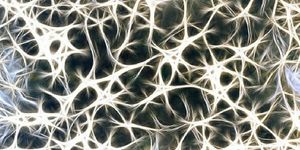3-D Projection: Printing with Light
Just when you think we have arrived at the "Star Wars" level technology with the latest hologram platforms, a clearer and more realistic light projecting method emerged. A group of engineering researchers at the Brigham Young University has come up with what they considered a true technology of the future—a three-dimensional images projection that can be viewed from all angles.
The current holographic method projects a recording of a light field on a certain medium which is usually a two-dimensional surface. The resulted display is a fully three-dimensional image of the holographic subject, which can sometimes be seen without the aid of special glasses or other intermediate optics.
Holograms generation require photographic information generated by light field cameras. A light field camera (or plenoptic camera) captures both the intensity of light and the direction that the light rays travel, whereas a conventional camera records only light intensity.
According to Daniel Smalley, an Electric Engineering Professor and the group leader, their projection technology, which relies on trapping dust-like particles as projection medium, is like a three-dimensional printer, when the hologram is just an ordinary two-dimensional printer. “Holograms appear to the eye to be three-dimensional, but all of the magic is happening on a 2-D surface,” he said. “The key is trapping and moving the particles around potential disruptions—like Tony Stark's arm—so the arm is no longer in the way.”
Also known as "volumetric display", the Smalley group’s technology is based on photophoretic optical trapping. Photophoresis is a phenomenon in which small particles suspended in gas or liquids migrate when lit by an intense beam of light. During projection, cellulose particles are suspended mid-air and the display instrument isolates single particle in the photophoretic trap. When the particle is trapped and illuminated with red, green and blue light, it starts to migrate within the free space and scatters light on its course. The accumulated effects of the movement and scattering of all particles as a whole produce a display—a three-dimensional image as the final product.
The Smalley group compared their platform “Optical Trap Display” to 3-D printing with light. So far previous versions of volumetric display use screen-like medium and can easily be disrupted by objects moving in and out of the projection. According to Smalley, the Optical Trap Display projects images without around potential disruptions because it can move particles around them.
Even though the projections have been tiny, Smalley hopes that bigger projections could be materialized in the near future and one day it can be used to help guide medical procedures.
Study of Smalley group’s “Optical Trap Display” was published in the journal Nature.
Pictures in the air: 3D printing with light. Credit: Nature Video
Source: phys.org









